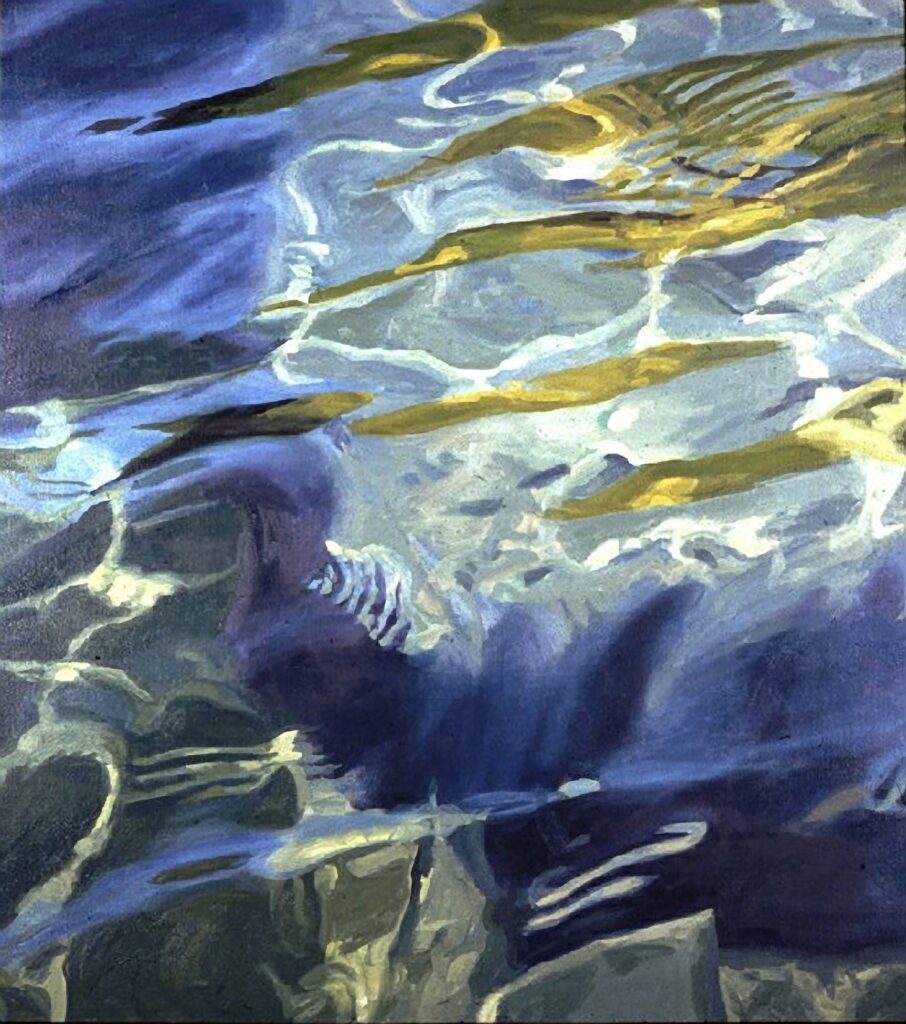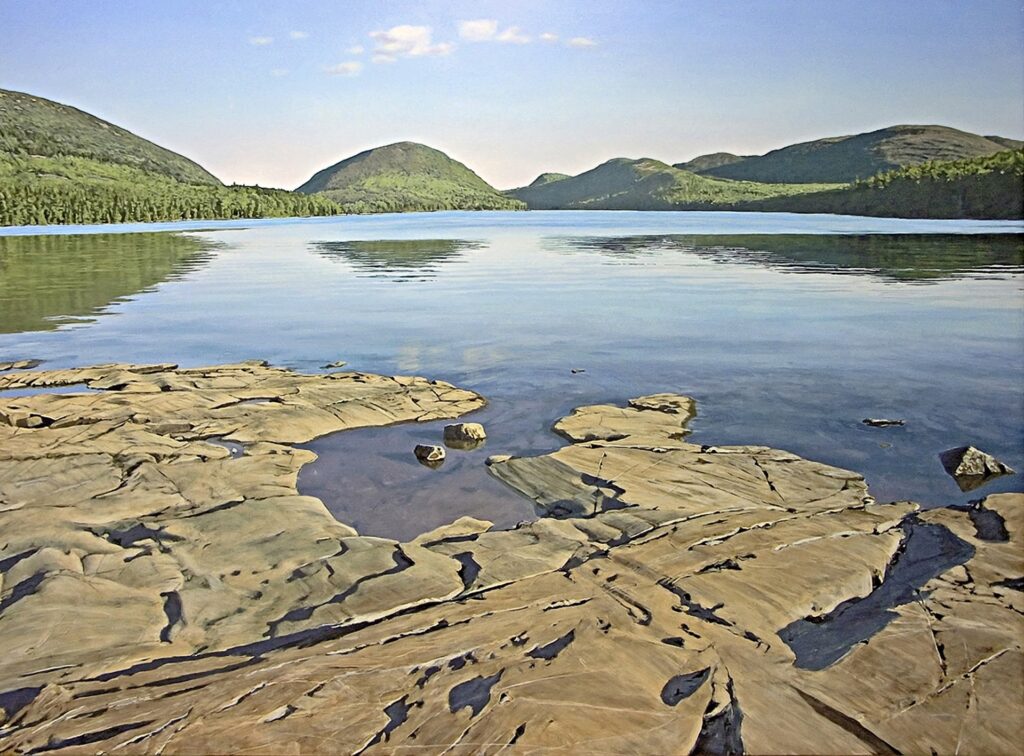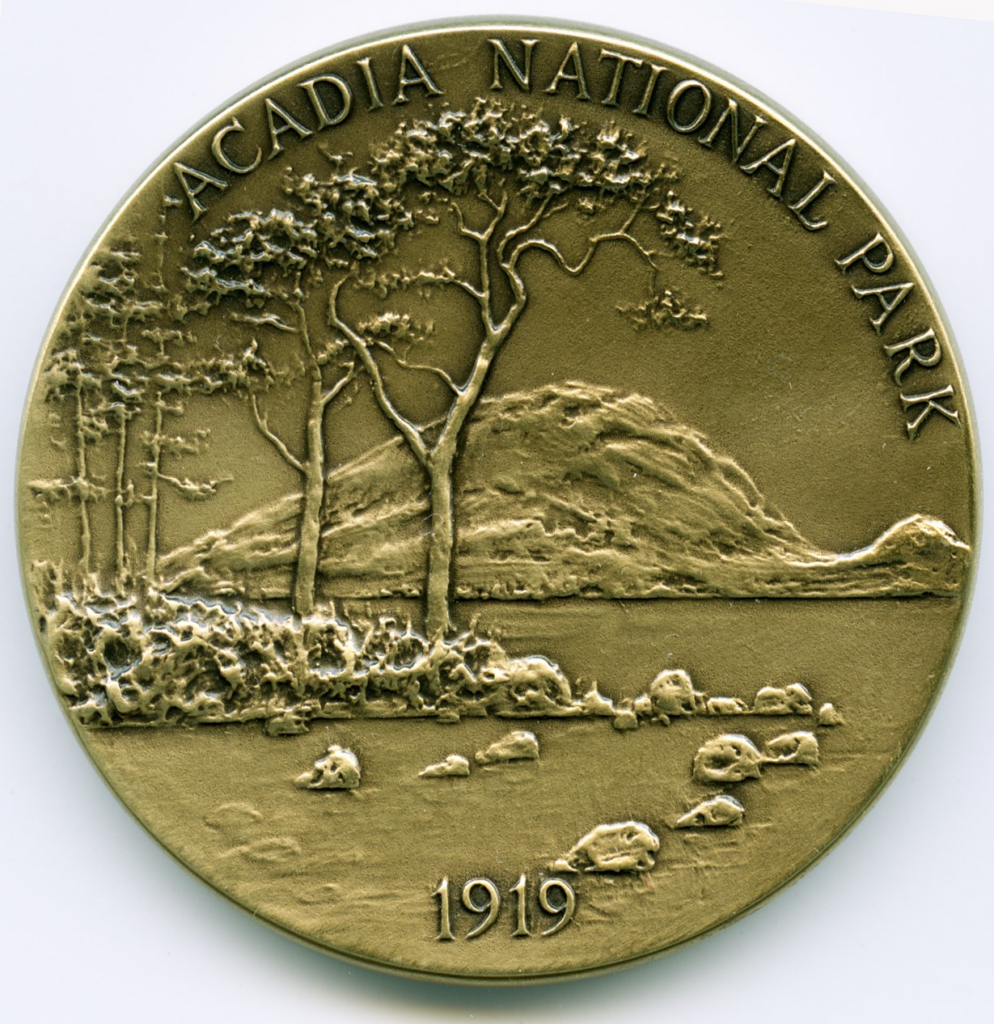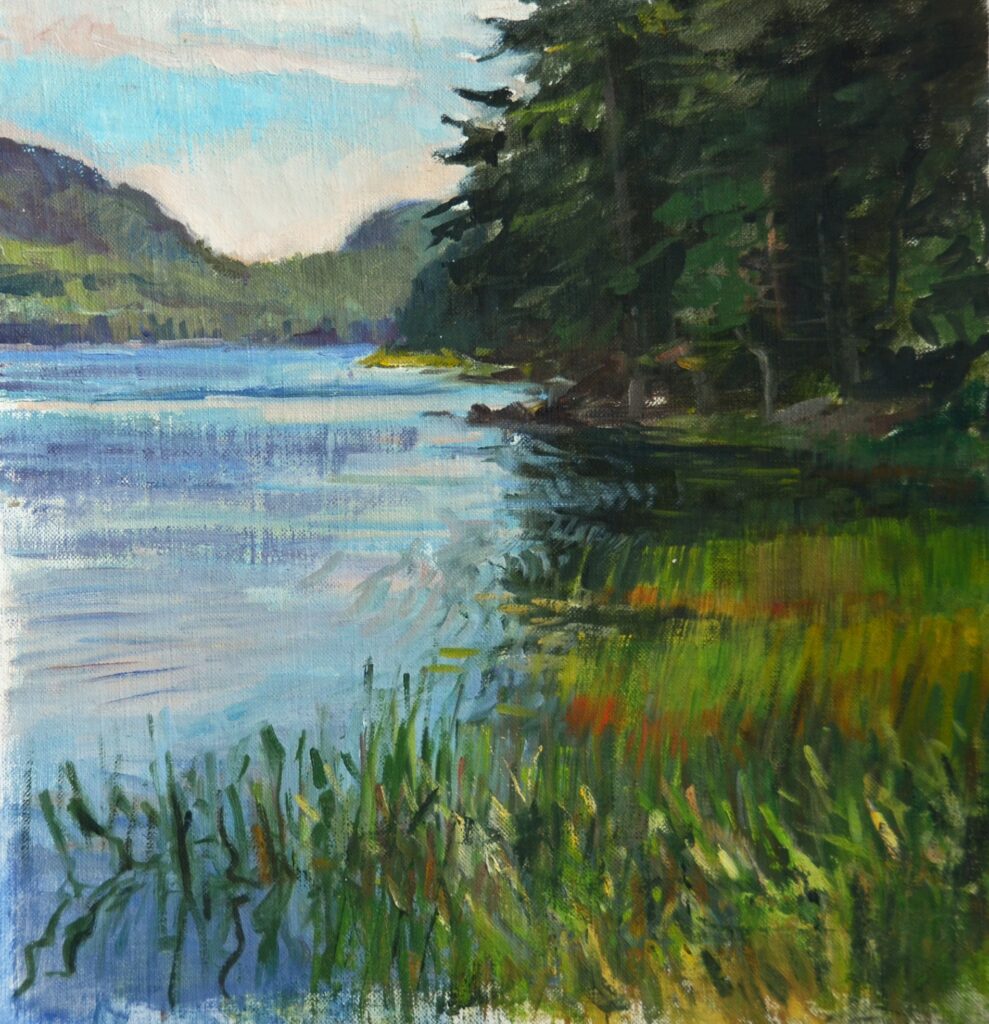Eagle Lake Inspires a Host of Artists
What might be thought of as the beating heart of Acadia National Park, this “great pond” not only provides drinking water to the town of Bar Harbor, but it also serves as muse.
April 2nd, 2025
What might be thought of as the beating heart of Acadia National Park, this “great pond” not only provides drinking water to the town of Bar Harbor, but it also serves as muse.
April 2nd, 2025
BY CARL LITTLE
Sometime in the late 1860s, Boston photographer Edward Lowe Allen (1830-1914) made a series of “stereo” views of Mount Desert Island. On the verso of some of these double-image photos, Allen listed various motifs that might appeal to the collector of these cards.
One, labeled “Mount Desert Scenery,” featured 37 subjects, including well-known houses, views, and the largest of Acadia’s “Great Ponds,” Eagle Lake.
What might be thought of as the beating heart of Acadia National Park, that great lake, all 436 acres of it, not only provides drinking water to the town of Bar Harbor but also serves as muse. From Frederic Church in the mid-19th century to present-day painters, the lake has drawn scores of artists to its mountain-surrounded shores.
PHYLLIS REES (1926-2012), who painted extensively in Acadia, found inspiration at the water’s edge. In “Eagle Lake, Moving Water,” Rees translated the confluence of water, sky, rocks, and weeds into a shimmering abstraction. “Every moment, every glimpse of nature offers a complex beauty, if we take care to love what we see,” she wrote in the introduction to “Intimate Views: Acadia National Park,” 2006.

Phyllis Rees, “Eagle Lake, Moving Water,” 1994, oil, 40 x 32 in.
The late art historian and Northeast Harbor resident John Wilmerding once referred to ERNEST MCMULLEN as the “painter laureate of Mount Desert Island.” McMullen, who retired from teaching at College of the Atlantic in 2015 after 40-plus years, earned this honor through stunning views painted in a hyper-realist manner.
“In the late summer, during periods of low water,” McMullen writes of his Eagle Lake vista, “the ledges emerge like ancient stone whales with their glacial-scoured backs telling mysterious tales of 12 thousand years ago.” There’s a wonderful sense in the painting of standing at the edge of a primeval place at the dawn of time.

Ernest McMullen, “Late Summer, Eagle Lake,” 2014, oil on panel, 36 x 48 in. Collection Margot and Boykin Rose. Photo courtesy the artist.
One of the nine “Great Ponds” located within Acadia National Park, Eagle Lake gained additional iconic status in 1972 when Montana-born sculptor and painter FRANK HAGEL (1933-2024) chose a view of the lake to feature on a commemorative medal. Commissioned by the National Park Service to design and model a series of medals to celebrate the 100th anniversary of the first national park—Yellowstone, in 1872—Hagel composed a simple scene of lake, trees, and mountains. (The “1919” on the medal refers to the year President Woodrow Wilson signed the act establishing Lafayette National Park.)

Frank Hagel, Acadia National Park commemorative medal, 1972. Copper and zinc alloy, 1-3/8 in. diameter. Medallic Art Company. Lettering by Joseph Di Lorenzo. Collection David Little.
To paint “West Shore, Eagle Lake,” ALEXANDRA TYNG set up her easel looking southeast, so she could get the distant view of the mountains and the sheltered cove into a single prospect. “I liked that half the composition was in light and the other half in shadow,” she writes, adding, “There were so many visual delights to paint!”
During decades of summer trips to Mount Desert Island from her home in Philadelphia, Tyng has painted a variety of motifs, including a remarkable series of aerial views. She is a die-hard outdoor painter; “Plein-air painting,” she once told critic Stephen May, “is my source of ideas and a way of keeping my brushstrokes fresh and my color sense accurate.” Her painting of the western shore of Eagle Lake testifies to the vibrancy that comes with on-the-spot rendering.

Alexandra Tyng, “West Shore, Eagle Lake,” 2017, oil, 12 x 11.5 in. Courtesy the artist and Dowling Walsh Gallery.
“The open eye of Eagle Lake,” as Christian Barter wrote in his poem “Île des Monts Déserts,” will continue to return—and reward—the regard of artists as long as we steward its precious waters. More than scenery, this lake represents the spirit of place.
CARL LITTLE, of Somesville, received the Lifetime Achievement Award for his art writing from the Dorothea and Leo Rabkin Foundation in 2021. His essay on Sargent Mountain Pond appears in the anthology “Alive to This” (Littoral Books, 2024).